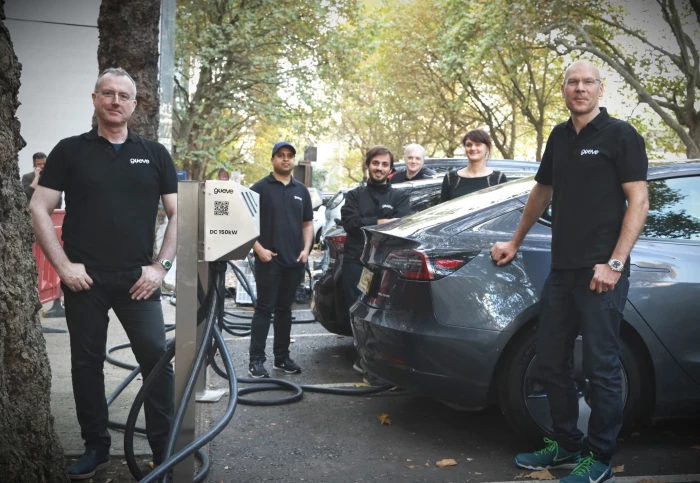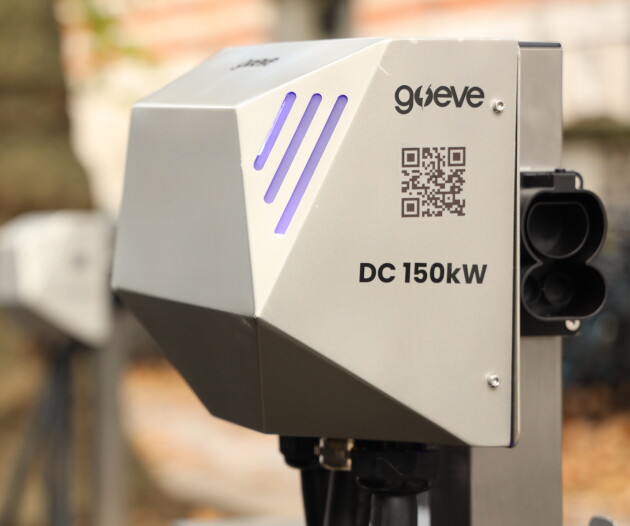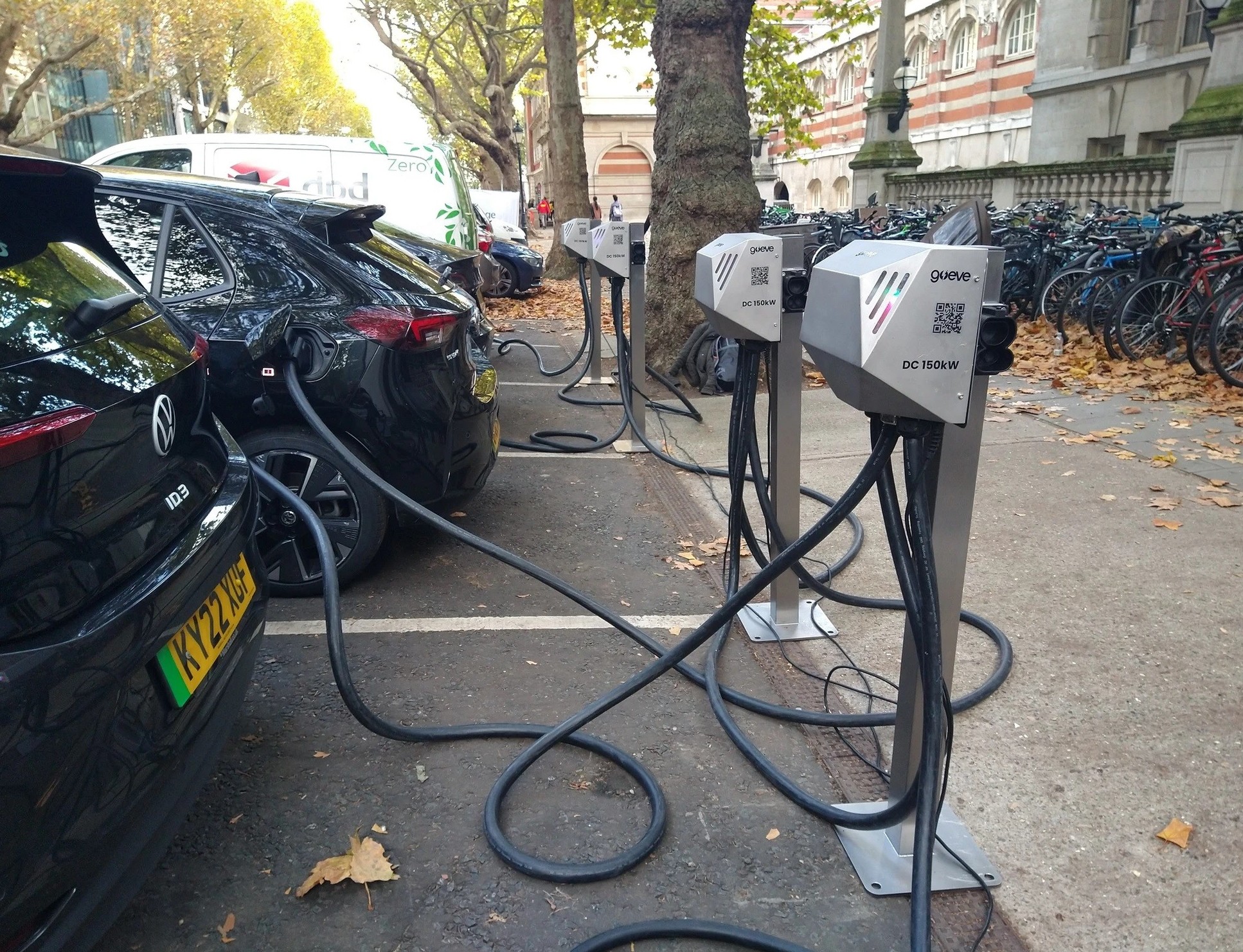Go Eve prepares to take its innovative vehicle charging solution to the market


After a first demonstration project at Imperial, electric vehicle charging startup Go Eve has raised £3m to carry out its first customer pilots.
A large-scale shift to electric mobility will be needed if we are to reduce our reliance on fossils fuels and improve air quality, yet developments in charging infrastructure are lagging behind the innovations of the automotive industry. Technical limitations, such as the ‘one car, one charger’ model, remain frustrating for electric vehicle drivers and fleet managers alike, and put a brake on wider usage.
 Go Eve, a startup created jointly by Imperial College London and University College Dublin (UCD), has developed a multiple vehicle charging system that provides an answer to this problem. After a first demonstration project at Imperial last year, the company has now raised £3 million in seed funding to help bring its system to the market.
Go Eve, a startup created jointly by Imperial College London and University College Dublin (UCD), has developed a multiple vehicle charging system that provides an answer to this problem. After a first demonstration project at Imperial last year, the company has now raised £3 million in seed funding to help bring its system to the market.
“The money we’ve raised shows that our multiple EV charging system has some traction,” says John Goodbody, Go Eve’s co-founder and marketing director. “These are investors who expect a return on their money, and by backing us they show that they believe in the idea as well as the company.”
Participants in the investment round included the Pearl Family Office, Carter Gem, Automotive Ventures Inc, Kero Development Partners, and Cur8 Capital.
Go Eve has the potential to deliver a strong return on investment while tackling the challenges of climate change. Dr James Groves Head of Investment Services, Imperial College
“Go Eve is another great example of an Imperial startup that has the potential to deliver a strong return on investment while tackling the challenges of climate and environmental change,” says Dr James Groves, Head of Investment Services at Imperial, which is a shareholder in the company.
Tom Flanagan, Director of Enterprise and Commercialisation at UCD, added: “We are delighted to continue to collaborate with our colleagues in Imperial College London as we support Go Eve in commercialising its exciting DockChain technology, which has potential to make a significant impact on how electric vehicles are charged on the global stage."
One charger, many vehicles
Go Eve’s approach to multiple vehicle charging was developed by Professor Robert Shorten and colleagues at University College Dublin. They built and tested a prototype, which they called DockChain, using the low-power alternating current (AC) channelled by domestic chargers. It worked, but commercialisation went no further.

Then, after Professor Shorten and two of the team had moved to the Dyson School of Design Engineering at Imperial, the idea was picked up by Hugh Sheehy and John Goodbody, two entrepreneurs interested in electric vehicles.
They asked if the system would also work with the high-power direct current (DC) used for roadside charging. The answer was yes, and in early 2021 Go Eve was set up by Hugh, John, Professor Shorten, Dr Pietro Ferraro and Andrew Cullen. Its aim: to commercialise multi-vehicle charging for fleets and locations such as office, hotel, and airport car parks.
The first pilot for the new system took place in November 2022, with a four-station DockChain set up at Imperial’s South Kensington campus. “We were able to charge the cars sequentially, in whichever order we wanted, at high power,” says Mr Goodbody. “And that was the first manifestation of the lab idea in a real car park.”

The London Electric Centre, which supplied the electric cars for the demonstration, was so intrigued by the innovation that it has offered to run the first customer trial at its large garage in Queensway, across the park from Imperial. John Goodbody hopes this will become a live test lab for Go Eve’s system, where new hardware can be put through its paces and potential customers can see the DockChain at work.
“It will be somewhere our products can be used everyday, in a live environment, and where we can be present as researchers as well,” he says.
Meanwhile, Go Eve, which has offices at NovaUCD in Dublin, has plans for further customer pilots in Ireland and the UK. “We are an Anglo-Irish company, so we will have teams working on both sides of the Irish Sea,” Mr Goodbody says.
Electrifying America
In addition to running these customer pilots, the seed funding will support the company as it completes certification of its chargers for Europe and the US, and works with manufacturing partners, predominantly in the UK, to build up the supply chain. It will also help to double the Go Eve team to 14 people by the end of 2023.
“This funding sees us through into 2024, when we will probably look at a Series A round to fund expansion,” says Mr Goodbody. “We’ve already had lots of interest from other investors, who would like to come in once the product is certified, or when the pilots are complete and we have our first revenue-generating customers.”
More than the money involved, the present funding round builds relationships that will help Go Eve take its first steps in the market. US investor Automotive Ventures, for example, specialises in innovations that support car dealerships, a sector badly in need of charging solutions.
There are a lot of showrooms, service bays and garages in the USA that all need to be electrified. With Go Eve’s system, that could be done at a fraction of the cost. John Goodbody Go Eve
“There are a lot of showrooms, service bays and garages in the USA that all need to be electrified, and Automotive Ventures opens that door for us,” says Mr Goodbody. “Electrifying all of these sites could cost millions of dollars, but with Go Eve’s system it would be a fraction of the cost.”
This is just the kind of bold intervention in the vehicle charging market that is required to produce a large-scale societal shift in electric mobility. “Go Eve has a team with a clear vision and the ambition to take an elegant engineering solution and build a product that could scale to be used at every car park, street and driveway,” says Dr Groves.
Mr Flanagan agrees. "Given the importance of climate action and sustainability, it is fantastic to see Go Eve close this £3 million seed funding round to enable it to take the next steps in bringing its innovative electric charging solution to market,” he said.
Article text (excluding photos or graphics) © Imperial College London.
Photos and graphics subject to third party copyright used with permission or © Imperial College London.
